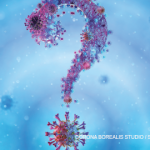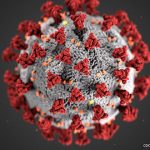The story of hepatitis C is a classic example of a diagnosis of exclusion. A serologic test to identify hepatitis B from blood donors was developed in 1974. A serologic test to identify hepatitis A was available a decade later. Screening the blood supply for these viruses, however, eliminated only about half of the post-transfusion cases of hepatitis. Because the evidence indicated the remaining cases were caused by a third virus, it was dubbed non-A, non-B hepatitis. It wasn’t until 1989 that scientists at the biotechnology company Chiron identified the culprit, which is now known as hepatitis C.12 For decades, this disease was a diagnosis of exclusion, until the diagnostic tests caught up.
Anyone can read a coronary calcium score off of a printout to diagnose a patient with atherosclerosis. Only a true clinician can diagnose a patient with … a rheumatic disease for which the perfect diagnostic tests do not yet exist.
U.S. Secretary of Defense Donald Rumsfeld stated, “As we know, there are known knowns; there are things we know we know. We also know there are known unknowns; that is to say, we know there are some things we do not know. But there are also unknown unknowns—the ones we don’t know we don’t know. And if one looks throughout history …, it is the latter category that tends to be the difficult one.”13
He might as well have been talking about rheumatology. The unknown unknowns represent the outer edge of our knowledge. We have a good sense of what remains unknown in rheumatology. The unknown unknowns represent the aspects of medicine we only think we understand—the chapters in the textbooks that are destined to be heavily rewritten. It’s the unknown unknowns that drive us to drag our puzzling patients back to the clinic so we can re-examine them, even after they have been given a putative diagnosis. These are precisely the patients who are routinely failed by diagnostic tests.
The diagnosis of exclusion has become in extricably linked with rheumatology because our diagnostic tests are so lacking. Only in rheumatology are we allowed to ignore antibody tests that don’t seem to speak to the patient’s diagnosis or to make diagnoses even when the supportive tests have refused to cooperate. Anyone can read a coronary calcium score off of a printout to diagnose a patient with atherosclerosis. Only a true clinician can diagnose a patient with adult-onset Still’s disease, seronegative rheumatoid arthritis or any one of a number of rheumatic diagnoses for which the perfect diagnostic tests do not yet exist.


